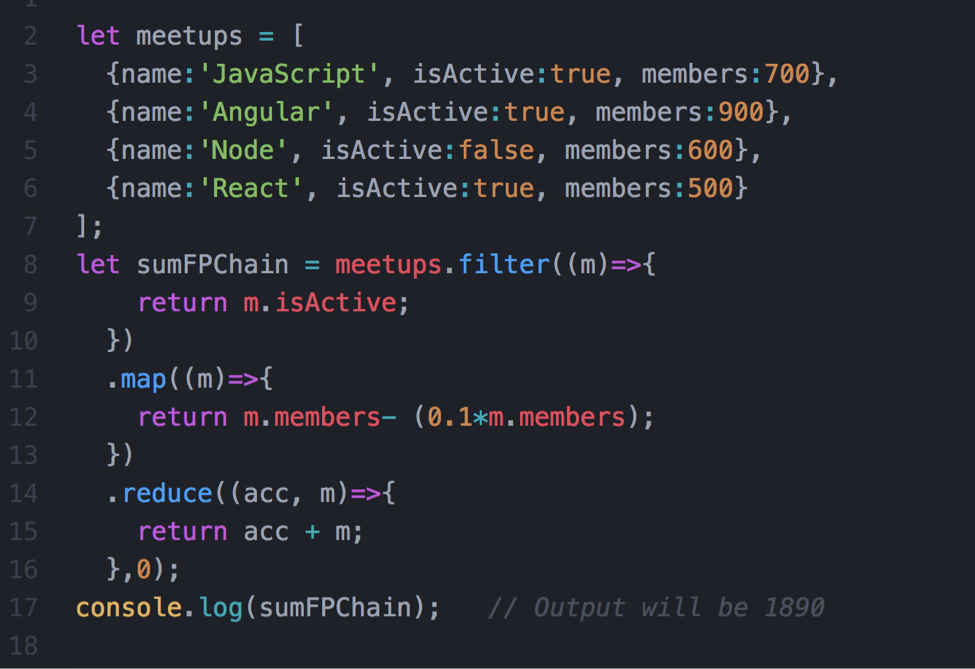JavaScript is an essential programming language for eLearning developers to know. Full stop.
If you’re an eLearning author, chances are you’ve been unknowingly implementing JavaScript with the authoring tools you use daily. At its core, eLearning is web-based content. Your LMS typically displays content within a standard web browser. The content shown by an LMS is coded in the universal web languages HTML, CSS, and JavaScript. When you create content in an authoring tool, that tool is writing the code behind the scenes as you create content in a WYSIWYG (what you see is what you get) environment. (Figure 1)

Figure 1: JavaScript in a WYSIWYG environment
If you want to expand your authoring skill beyond the capabilities of your authoring tool, the key to doing so is learning the languages of eLearning. Adding capabilities like augmented and virtual reality, or implementing libraries like the Experience API, can be done (or in the case of the Experience API must be done) in JavaScript.
As we look at expanding our skills in the new year, I’d like to encourage you to make 2020 the year to learn JavaScript. If you decide you are up for this challenge, let me be the first to congratulate you! Here are a few tips to make your learning adventure a bit more comfortable.
Make JavaScript easier to learn by learning HTML5 first
JavaScript has many roles outside web and eLearning development. However, its original home is on the web. Understanding HTML5 provides an excellent context. It’s tough to understand concepts like DOM manipulation without understanding HTML5. Learning HTML5 will also give you a way to show immediate results for your learning. Being able to show results immediately will motivate you and keep you learning. Besides, HTML is pretty easy to learn—and it's something that you’ll need for almost any project you do on the web.
Make JavaScript easier to learn by learning vanilla JavaScript first
There are hundreds—maybe thousands—of JavaScript libraries out there. These libraries make JavaScript coding easier for developers. For example, the jQuery library can compact a dozen or more lines of code into two or three commands. Other libraries expand upon JavaScript extending its abilities. Regardless, I recommend you learn plain, vanilla, JavaScript first. It may seem more onerous at first, but people who learn libraries first often miss important fundamentals that they’re going to need. Learn libraries after you have the fundamentals down, and you’ll benefit more!
Make JavaScript easier to learn by taking a formal course
Sure, there are thousands of JavaScript videos on YouTube. And they’re all free. But in this case, free has a cost. To learn, you need a consistent curriculum, and you need more than just videos. Formal courses will contain all the ingredients you need to start independently coding JavaScript. An excellent course will also give you lots of code labs to practice your new JavaScript skills. Speaking of practice:
Make JavaScript easier to learn by practicing—a lot
No one has learned to code by just watching videos. It’s only by actually coding that you’ll pick up the syntax, skills, and techniques used in development. When you learn, for example, to code a JavaScript by writing several different types of loops that yield different results. Keep practicing until you can write a loop without looking at a reference. Then you know you understand the concept.
Make JavaScript easier to learn by doing projects
Once you’ve finished a curriculum for fundamental JavaScript, it’s time to start completing projects that force you to apply the JavaScript you’ve learned. There are dozens of APIs—application programming interfaces—that can be accessed to make elegant JavaScript applications. There are loads of project ideas to be found by just browsing the app store. It doesn’t matter which projects you choose—see the project through to the end so you learn to apply JavaScript in a real-world setting.
Best cheap and low-cost resources for learning JavaScript
With these tips in mind, where can you go to learn? I’ve assembled a number of free and low-cost options for you to consider.
JavaScript Essential Training with Morten Rand-Hendricksen is found on LinkedIn Learning. This is one of the best eLearning courses out there for beginners. If you have a LinkedIn Learning (formerly Lynda.com) subscription, you’re ready to go. Even if you don’t, as of this writing they are offering a 30-day free trial.
You’d be forgiven for overdosing on cute with the free JavaScript for Cats tutorial. Yes, it’s a silly name, but it’s a serious tutorial. The interactive written tutorial is loaded with cat pictures so you’ll stay entertained as you learn. (Figure 2)

Figure 2: JavaScript for Cats is a silly name but a serious tutorial
FreeCodeCamp’s Basic Introduction to JavaScript is, like the name implies, a free JavaScript tutorial. FreeCodeCamp provides an interactive format where you can code within the tutorial itself. It’s a great interactive experience and well-executed from an instructional design standpoint. Obviously, all of FreeCodeCamp’s programs are free of charge.
The Modern JavaScript Tutorial is more like a textbook on the web. It is comprehensive and detailed and works as a great reference to supplement whatever path you choose to learn JavaScript.



